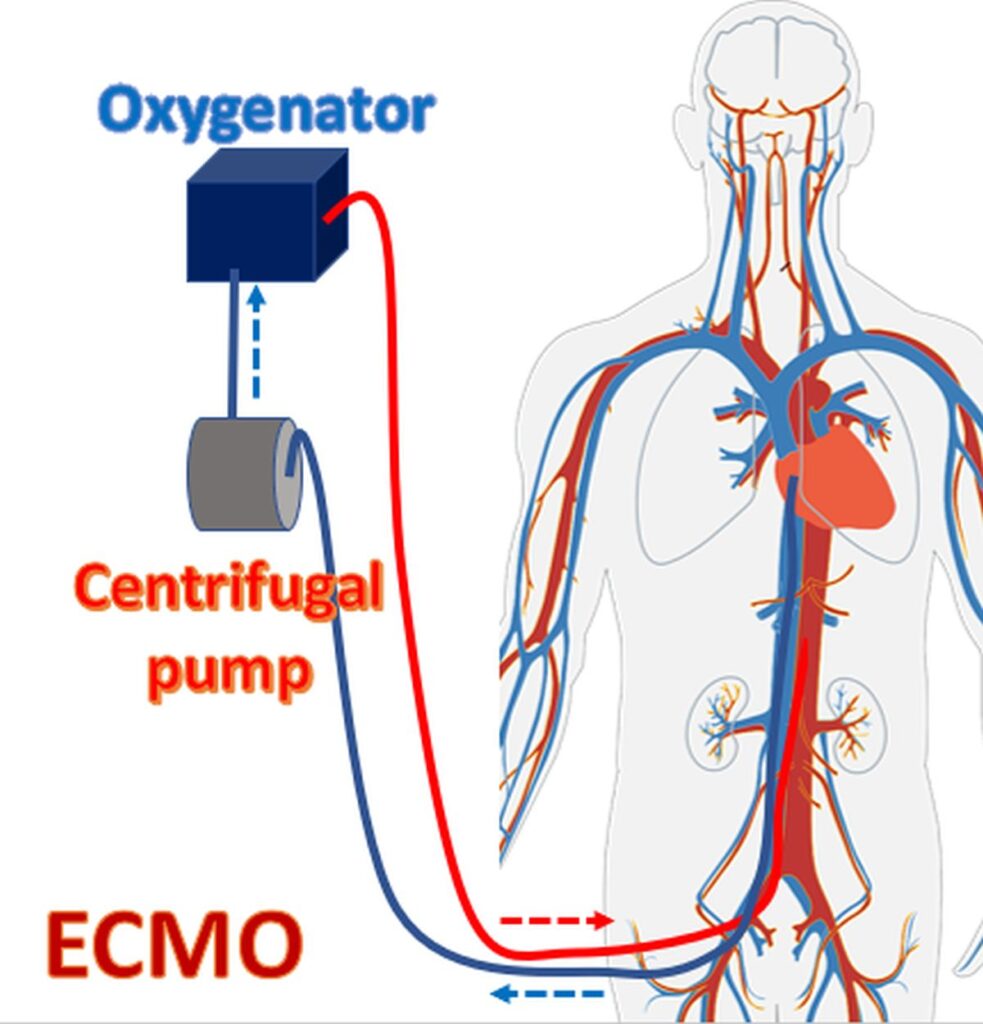What is extracorporeal CPR (ECPR)?
What is extracorporeal CPR (ECPR)?
Cardiopulmonary resuscitation (CPR) is an emergency treatment given to those who have developed sudden stoppage of heart function known as cardiac arrest, in an attempt to improve survival. Without CPR, cardiac arrest is equivalent to death. Conventional cardiopulmonary resuscitation involves chest compressions and breathing support with either mouth to mouth breathing or bag and mask ventilation. Extracorporeal CPR (ECPR) means supporting the heart and lung function using a machine.

Extracorporeal means outside the body, that is heart and lung function is given to an outside machine kept near the victim, till the victim’s own heart and lung function recovers fully with treatment. If the cardiac arrest was due to a heart attack, removal of the block in the blood vessel might help recovery of heart function soon. ECPR gives a longer time window for recovery of heart function than conventional CPR. Conventional CPR provides only about a quarter of the amount of blood to the vital organs compared to normal heart function. So it is a low flow situation and cannot maintain good function of the vital organs for long. On the other hand ECPR can provide sufficient blood supply to the vital organs like brain and heart.
ECPR is provided a machine known as extracorporeal membrane oxygenator (ECMO), kept beside the person. The main parts of the machine are a centrifugal blood pump and a membrane oxygenator which enriches the blood with oxygen. Venous blood with low oxygen content is removed from the body using a small tube placed in the vein in the groin. The blood is oxygenated using the membrane oxygenator and returned to the body. This is done through a small tube placed in the femoral artery, the blood vessel in the groin carrying oxygenated blood. Tip of the tube extends backwards, higher up into the aorta, the largest blood vessel carrying oxygenated blood to the whole body. ECMO is a portable device unlike the heart lung machine used in heart surgery theaters during open heart surgery. A study has been planned to start ECPR on the scene in case of out-of-hospital cardiac arrest, using portable ECMO equipment by helicopter emergency medical services in some regions.
In a study named CHEER trial, CPR was provided with a mechanical device, blood was cooled by injecting ice-cold saline and ECMO was used to provide early return of fair blood flow to the vital organs. 11 of the victims had out-of-hospital cardiac arrest and 15 had in-hospital cardiac arrest. ECPR could be instituted in 24 of the 26 eligible patients within a reasonable time, and 14 could be discharged from the hospital with good recovery of brain function.
Cooling of the body was maintained in the intensive care unit using the machine for 24 hours, to improve brain recovery. Those patients with a suspected block in the blood vessel of the heart was transferred for a test known as coronary angiography, X-ray imaging of the heart after injection of medications. This was in view of mechanical removal of the block using a balloon tipped tube, known as coronary angioplasty.
In addition to the good blood flow the vital organs provided by ECMO, another advantage of ECPR is that rapid cooling of the body for protecting the brain is possible due to the availability of heat exchanger. As a good blood flow is maintained even during cardiac arrest, doing a coronary angioplasty when the heart is in standstill is facilitated by ECPR.
But ECPR is costly, needs a lot of technical support and availability is very low. Ethical issues on who should be given ECPR and when it can be discontinued when deemed to be futile are being discussed in various forums. Careful selection of cases when conventional CPR is not working is the rule. Cases are chosen based on the reasonable possibility of good recovery, as per the institutional protocol for ECPR.
Important complications of ECPR are bleeding, reduced blood flow to the leg in which the tubes are placed and infection. These can be reduced with meticulous care by a team of dedicated personal, regular monitoring of blood clotting function and other important blood tests.



